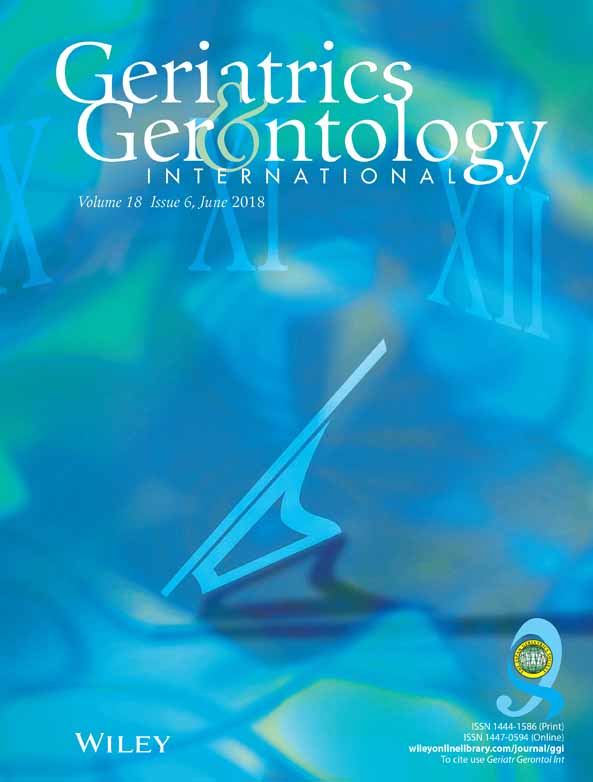Association between objectively measured chewing ability and frailty: A cross-sectional study in central Thailand
Abstract
Aim
Limited data are available on the association between oral function and frailty, especially in developing countries. Additionally, the association between objectively assessed chewing function and frailty has not been well studied. The present cross-sectional study tested the hypothesis that objectively measured poor chewing ability is associated with frailty in community-dwelling older Thai adults.
Methods
The study population comprised 141 people in Nakhon Pathom, Thailand (median age 72 years). Demographic and clinical data were collected at a community center. Participants were asked to chew a gum designed for assessing chewing ability. The differences in gum color before and after chewing (ΔE*ab) were calculated and used as the exposure variable, where a lower ΔE*ab indicates lower chewing ability. Frailty phenotypes were defined by weakness, slowness, weight loss, low physical activity level and exhaustion components, and used as the outcome variable. Participants with three or more components were considered frail, and those with one or two components were considered pre-frail. Ordinal logistic regression analyses were carried out to assess the association of objective chewing ability with frailty.
Results
Of the 141 participants, 32 (22.7%) were categorized as frail and 78 (55.3%) as pre-frail. In the analysis adjusted for demographic and health characteristics, the adjusted odds ratio of the presence and severity of frailty was significantly higher in participants with lower ΔE*ab (adjusted odds ratio for one decrease in ΔE*ab 1.05, 95% confidence interval 1.01–1.10, P = 0.03).
Conclusions
Objectively measured chewing ability was significantly associated with frailty in community-dwelling older Thai adults. Geriatr Gerontol Int 2018; 18: 860–866




